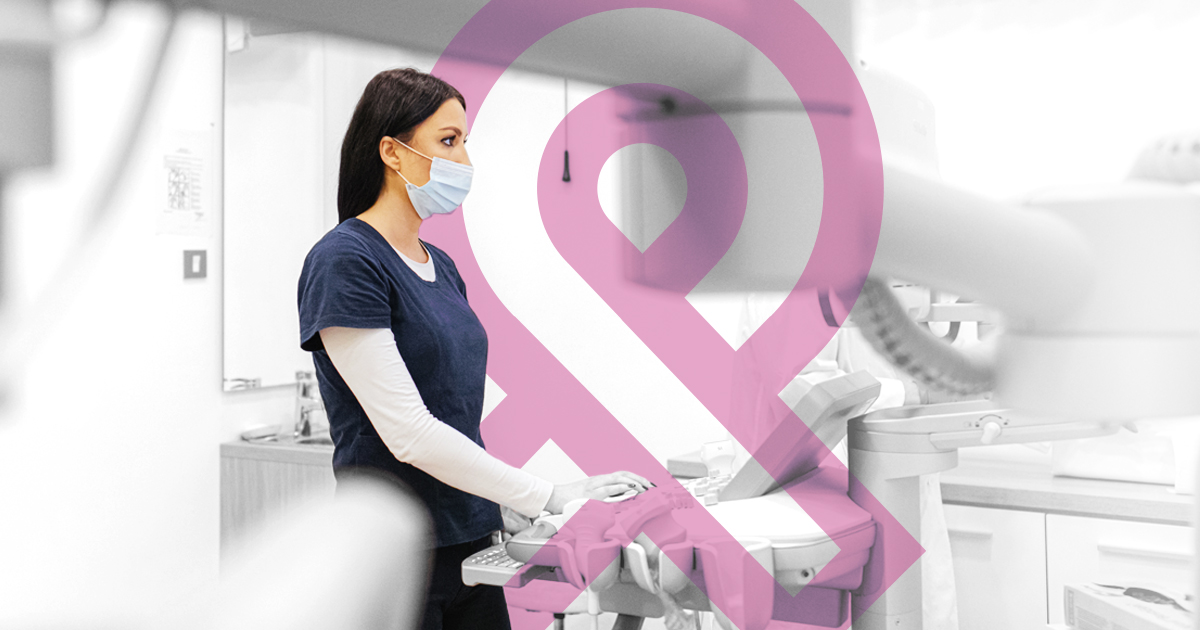Covid-19 Pandemic Takes a Toll on Breast Cancer Screening

Studies have long shown that when it comes to breast cancer, early detection is the key to survival. A recent study found that women who had been regular with their scheduled screening mammography appointments before a cancer diagnosis had a 49% lower risk of breast cancer mortality and a 50% lower risk of breast cancer death within 10 years of diagnosis (Radiology, March 2, 2021).
This data points to what has long been held by experts, including the physicians at Arizona Diagnostic Radiology (AZDRG), RadNet and Breastlink, that the sooner a doctor finds a woman’s cancer, the more likely she is to survive.
Now, fast-forward to the year 2022 and beyond. We are struggling to emerge from a world-wide pandemic where the toll of Covid-19 extends far beyond the virus itself. According to many experts, a secondary health crisis seems to be unfolding, caused by delays in essential healthcare screenings and management.
A recent study confirmed that breast cancer screening specifically had a decline that saw over 2 million missed mammography exams (JAMA Network Open, June 3, 2022). While screening volumes did improve after services reopened and various safety protocols were put into place, research still suggests that all of these missed screenings could lead to long-term consequences.
Dr. Linda Greer, a breast imaging specialist and Medical Director at AZDRG, reiterates this study. “We are seeing larger tumors now,” she explains. “These cases will inevitably need more serious treatment, will result in longer recovery times, and perhaps lower survival rates.”
Dr. Greer emphasizes that time will be the ultimate test of what the long-term effect of this decline in screening will be but she says, “the prediction would be that larger, perhaps more aggressive tumors will be found due to the delay in diagnosis, which may now require chemo, and that might not have been the case if caught earlier.”
Another recent study revealed even more alarming results. The toll the pandemic took among women of color, with regard to mammography screening volumes, resulted in more than 50% less exams between 2019 and 2020 (American Journal of Roentgenology, March 30, 2022).
“What concerns me is the disparity,” Dr. Greer says. “The decline in screening was much more in non-white populations and in lower socio-economic groups.”
These findings may indicate a sharp increase in breast cancer incidence and severity among minority women in the near future.
Dr. Greer points to other issues women faced during the pandemic that contributed to the decline in screening, such as unemployment and loss of health insurance. “It may not all be about isolating and waiting for cleanliness procedures to be in place,” she explains.
Evidence from the studies mentioned above, as well as many others, indicates that healthcare systems need to address disparities in treatment and information, as well as availability and implementation of screening services in order to bring the benefits of screening to the entire population.
Dr. Greer agrees, pointing out that there are several programs available for uninsured women that will help them get screenings, programs they may not know about. You can find information on free screening programs on various websites, such as www.cancer.org. Free screening mammograms are also available through the Affordable Care Act.
“We need to be more vocal as a profession and get people in for screening,” Dr. Greer emphasizes. And in the wake of all that we have been through in the last couple of years, perhaps we should all be more vocal about taking care of our health.

